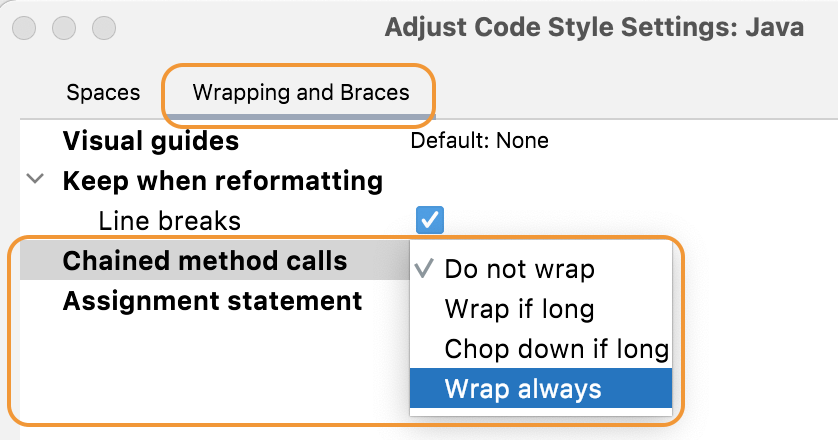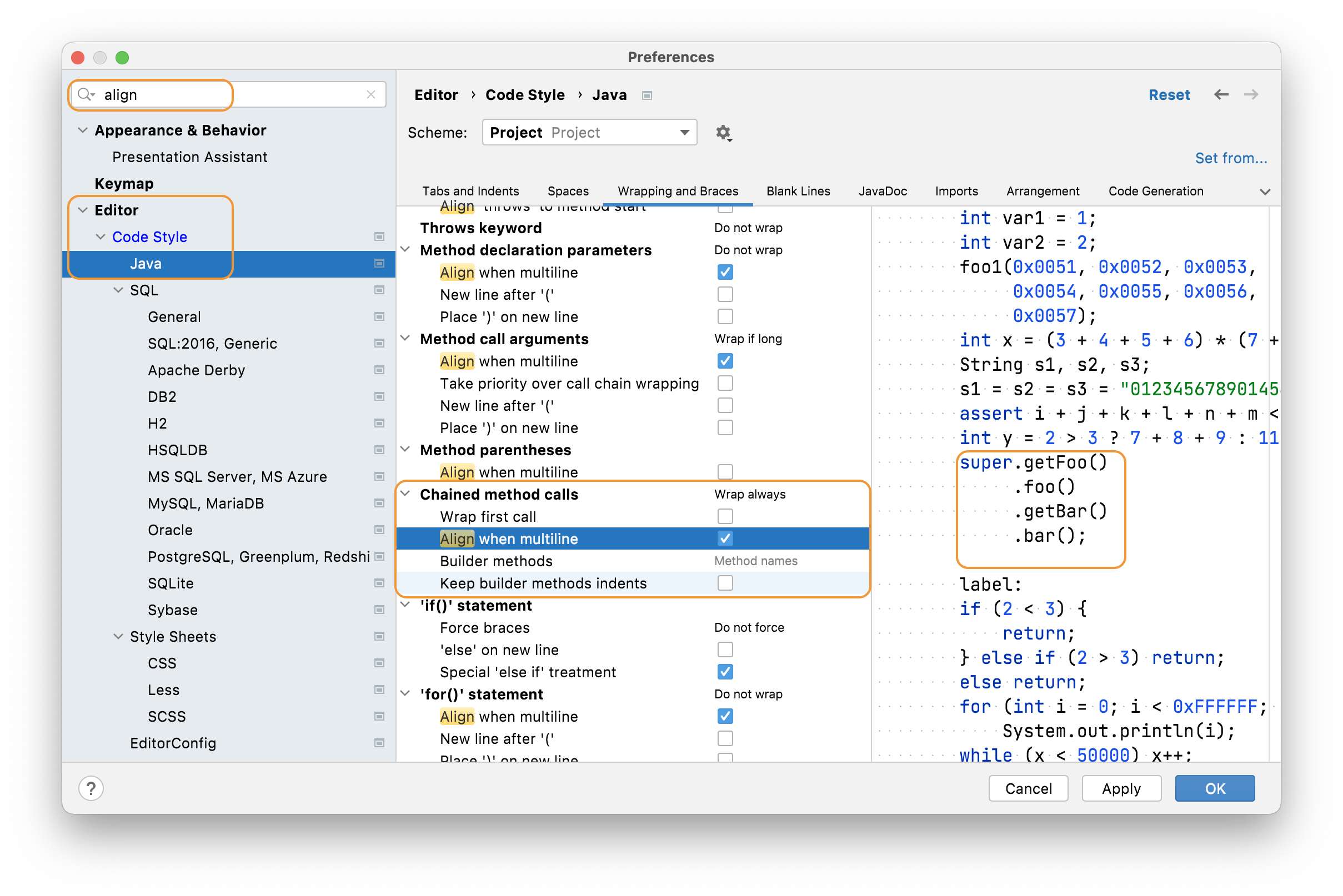Example of Reformatting Code
Invoking Reformat Code on a class and viewing the results
A Before and After Example of Code Rearrangement
Let's take a look at some code that we will reformat. We will use Java 8 Streams for this. At the moment, our Code Style settings mean that our stream operators are long chained method calls which makes for an extremely long line of code:
private int replaceWithMapToInt() {
int count = integerStringMap.values().stream().filter(Objects::nonNull).flatMap(Collection::stream).filter(stringVal -> stringVal.contains("error")).mapToInt(String::length).sum();
return count;
}
Let's say you want to change your Code Style Settings so that your Stream operations are always on separate lines, and they are lined up underneath each other. Instead of going into settings, you can highlight the code and then use intention actions by pressing ⌥⏎ (macOS) / Alt+Enter (Windows/Linux). Select Adjust code style settings and go to your Wrapping and Braces tab. As you make changes here, they will be previewed in your editor. Locate the Chained method calls and change it to Wrap always:

Our code is looking better, but it's not quite there:
private int replaceWithMapToInt() {
int count = integerStringMap.values()
.stream()
.filter(Objects::nonNull)
.flatMap(Collection::stream)
.filter(stringVal -> stringVal.contains("error"))
.mapToInt(String::length)
.sum();
return count;
}
You also want all the dots to line up vertically under .values in this case. For this setting we'll need to go into Preferences/Settings with ⌥⏎ (macOS) / Alt+Enter (Windows/Linux) and then type in align to filter the results. Navigate to Editor | Code Style | Java | Wrapping and Braces and find the option called Chained method calls again. This time select the Align when multiline checkbox:

Now when you press OK your code should look like this:
private int replaceWithMapToInt() {
int count = integerStringMap.values()
.stream()
.filter(Objects::nonNull)
.flatMap(Collection::stream)
.filter(stringVal -> stringVal.contains("error"))
.mapToInt(String::length)
.sum();
return count;
}
This is much easier to read than the long line you started with!
Summary
Now we've looked at when and how you can reformat your code, let's summarise it all with further reading and the shortcuts we used.
